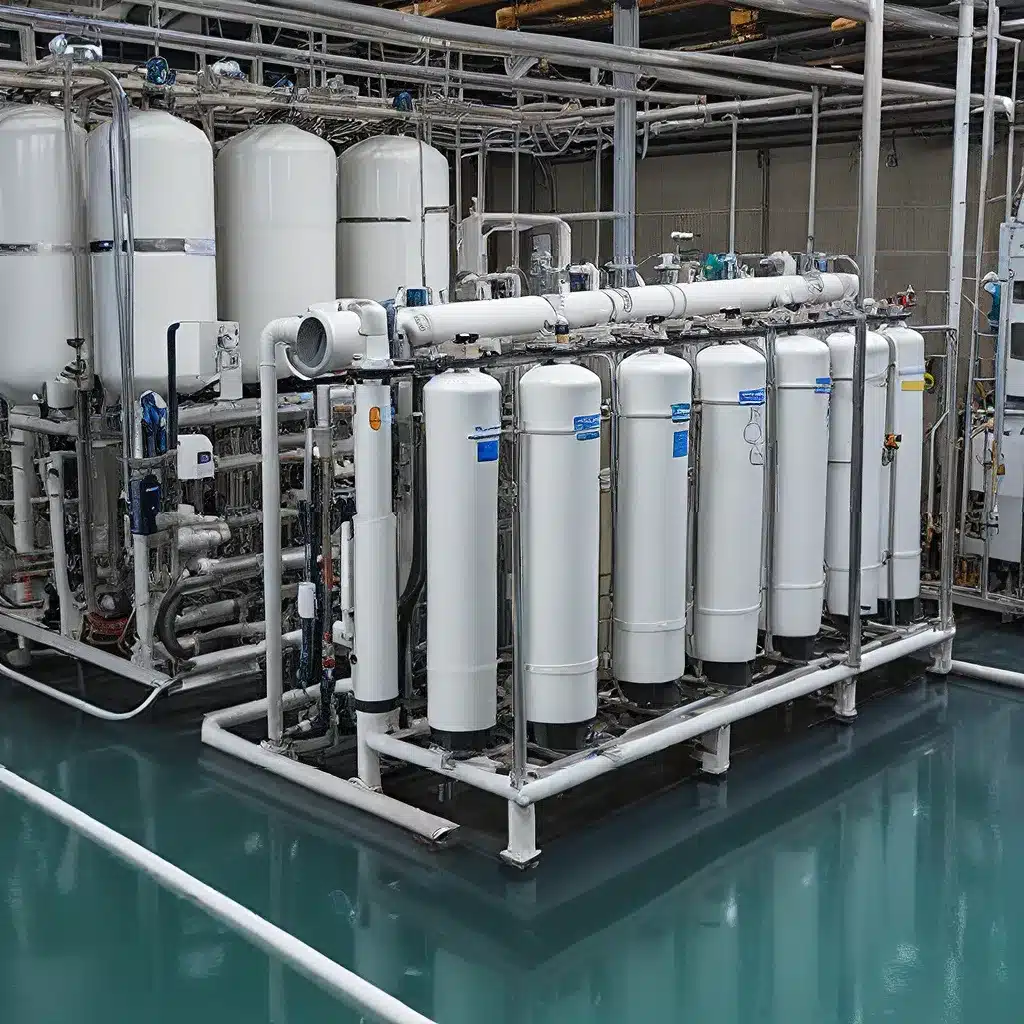
Bringing a Splash of Innovation to Water Reuse
As I dive into the world of water treatment, I can’t help but be amazed by the advancements in technologies like ultrafiltration (UF) and reverse osmosis (RO). These powerhouse processes are revolutionizing the way we approach water reuse, opening up new possibilities for communities grappling with water scarcity and sustainability challenges.
Recent research has shown that non-RO based treatment trains can be just as effective, if not more so, in providing safe, high-quality water for potable reuse. And the best part? They come with a significantly lower price tag and carbon footprint compared to the traditional full advanced treatment (FAT) model.
Redefining the Reuse Landscape
Traditionally, most planned potable reuse projects in the US have relied on the energy-intensive FAT approach, which includes a whole host of processes like microfiltration, UF, RO, ultraviolet (UV) light disinfection, and advanced oxidation. While this combination undoubtedly delivers top-notch water quality, the high costs and environmental impact have been a major barrier for many utilities.
But now, the game is changing. Innovative treatment trains that skip the RO step are proving to be a game-changer, providing potable water reuse at a fraction of the cost and carbon footprint of the conventional FAT model. And the best part? These non-RO approaches can deliver water that is equally, if not more, protective of public health.
Embracing the Non-RO Revolution
One of the key players in this non-RO revolution is a process called ozone-biologically active filtration (ozone-BAF). Research has shown that this combined approach can effectively remove pathogens and pollutants, making it a viable alternative to the RO-heavy FAT model.
But the benefits of non-RO treatment don’t stop there. These innovative systems can also recover up to 10% more water than traditional methods, a crucial advantage in water-stressed regions. And for inland communities where brine concentrate disposal is a major headache, non-RO approaches open up the possibility of potable reuse, something that may have been off the table before.
Unlocking Massive Cost Savings
The financial implications of this non-RO revolution are staggering. According to Brown and Caldwell, a full-scale advanced treatment facility at the DC Tillman Water Reclamation Facility in Los Angeles, California, could save over $500 million over a 30-year period when compared to the conventional FAT approach.
That’s a mind-boggling amount of money that could be redirected towards other critical water infrastructure projects or used to keep rates affordable for consumers. And the savings don’t stop there – the lower carbon footprint of non-RO systems means they’re also better for the environment in the long run.
Pilot Projects Paving the Way
Curious to see this non-RO approach in action? Look no further than the San Diego Pure Water Project and the DC Tillman Water Reclamation Facility in Los Angeles. Both of these pioneering projects are incorporating ozone-BAF pilots to validate the treatment approach, with the San Diego project expected to produce a whopping 13% of the city’s drinking water by 2035.
And the excitement doesn’t end there. Wigen Water Technologies, a leading supplier of membrane technology, has been selected to provide UF and RO demonstration facilities for several signature water reuse projects, further cementing the industry’s commitment to these innovative solutions.
Navigating the Complexities
Of course, as with any new technology, there are complexities to navigate. Viruses, for instance, are a particular concern when it comes to water reuse, requiring careful attention to ensure public health protection. Research projects are underway to evaluate virus removal efficiency and identify appropriate surrogates for these advanced treatment processes.
And let’s not forget the importance of regulatory oversight. Utilities and regulators are working hand-in-hand to develop industry guidance and standards for these non-RO-based treatment trains, ensuring that they meet or exceed the stringent requirements for potable reuse.
A Splash of Optimism
As I reflect on the remarkable advancements in UF and RO technology, I can’t help but feel a surge of optimism for the future of water reuse. These innovative solutions are poised to transform the way we approach water scarcity, offering communities a more sustainable, cost-effective, and environmentally-friendly path forward.
So, the next time you turn on the tap, remember the tireless efforts of researchers, engineers, and water professionals who are working hard to ensure that every drop counts. And who knows, maybe your water is already a product of this non-RO revolution, quenching your thirst while saving the planet one sip at a time.
Dive in and explore the exciting world of water reuse – the future is as clear as the water it produces.


